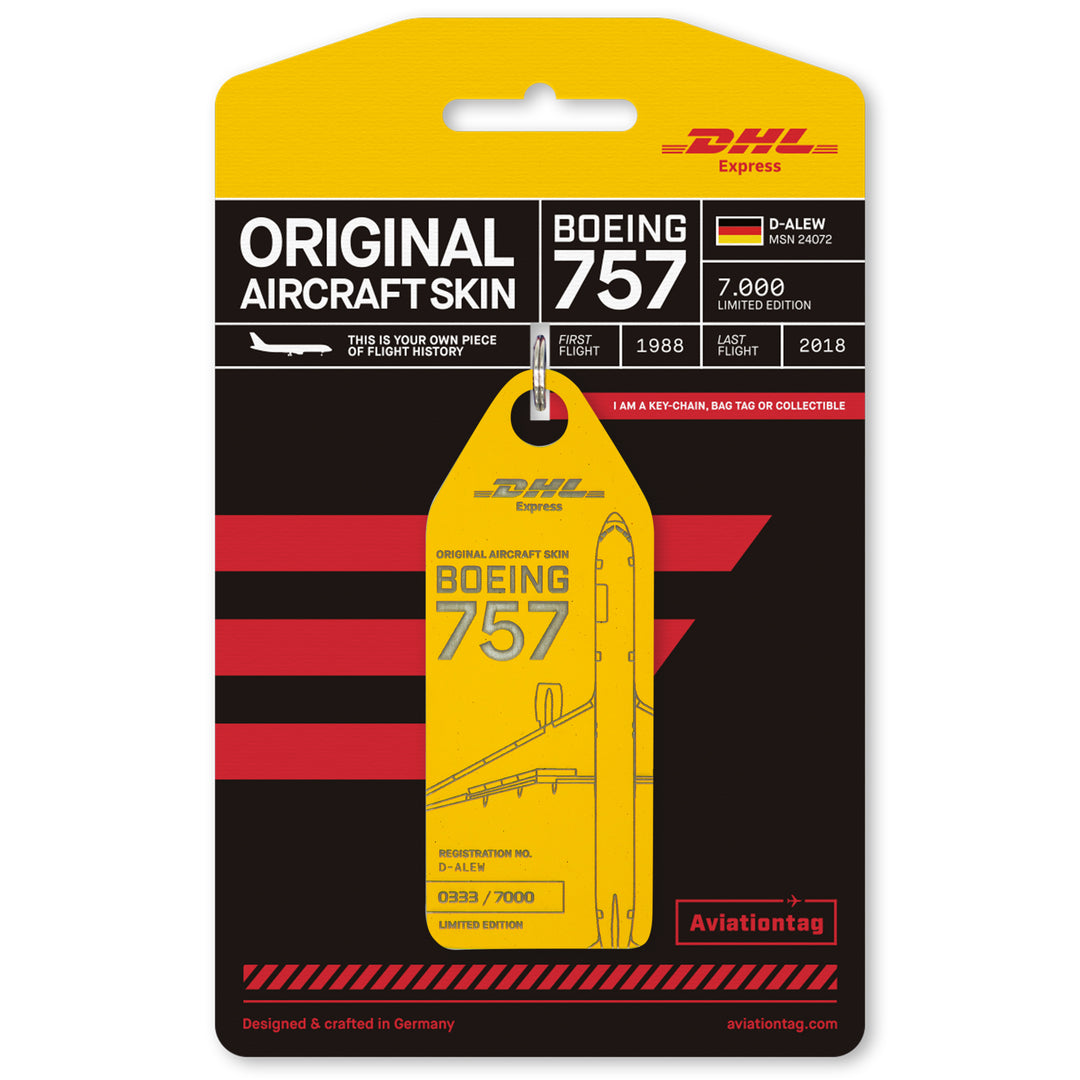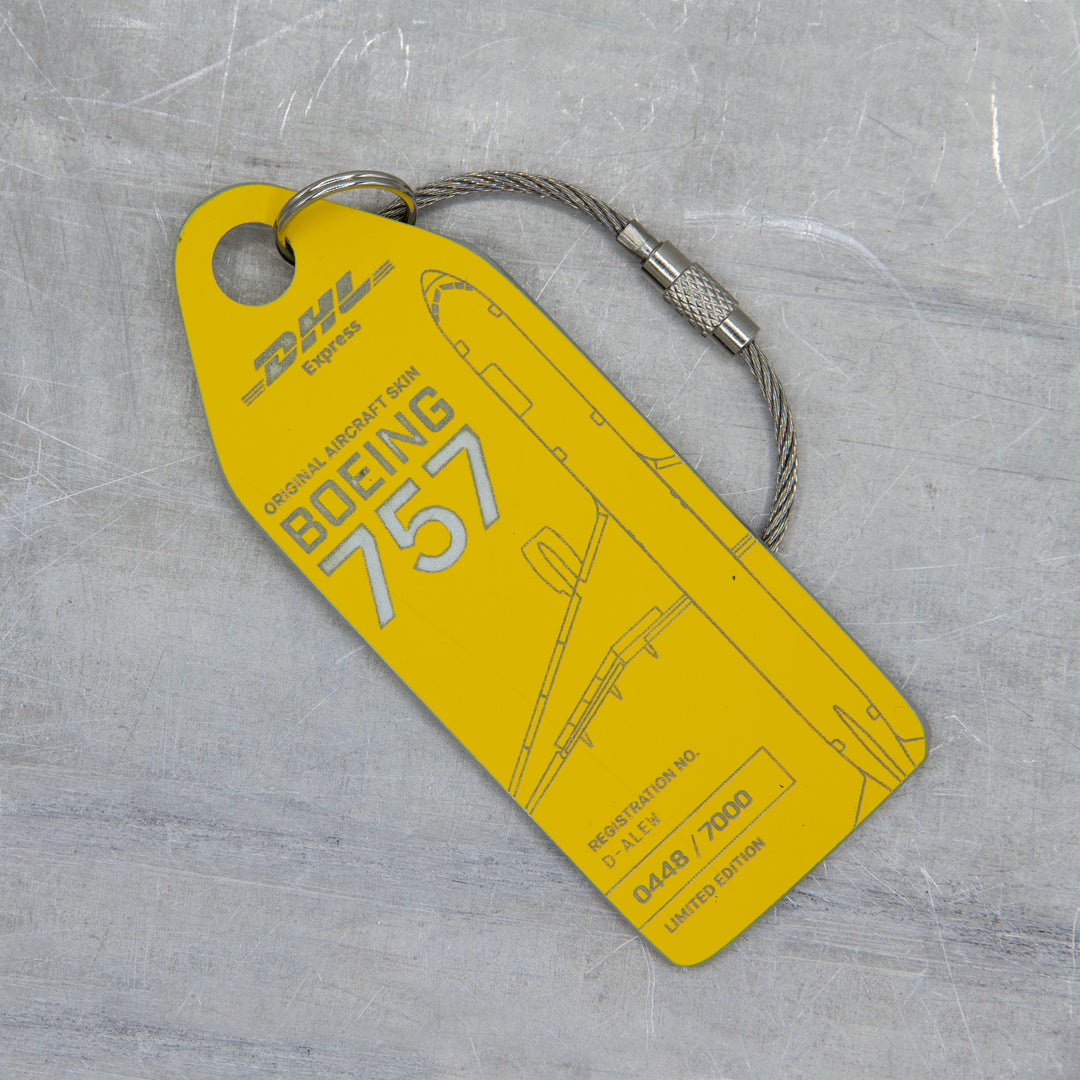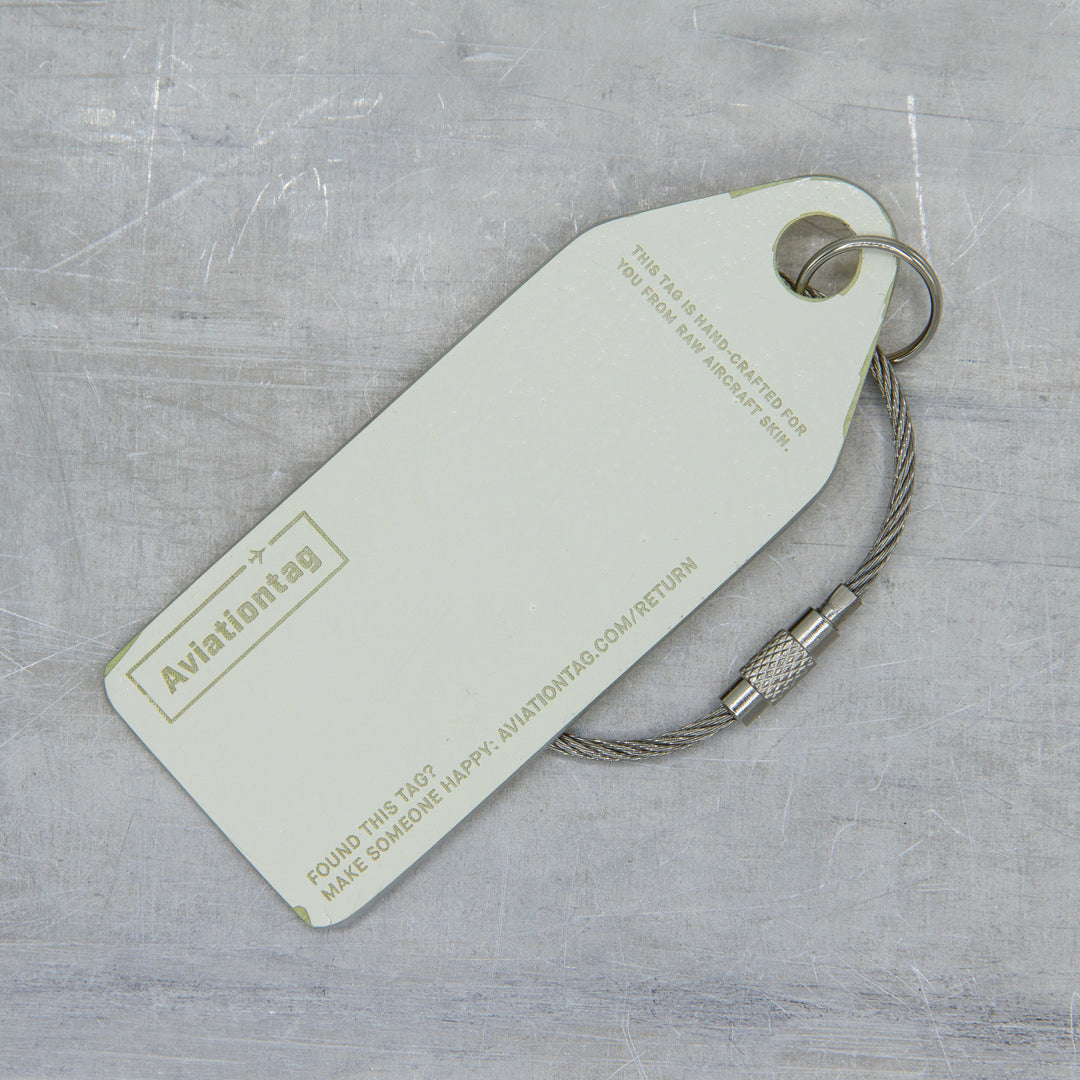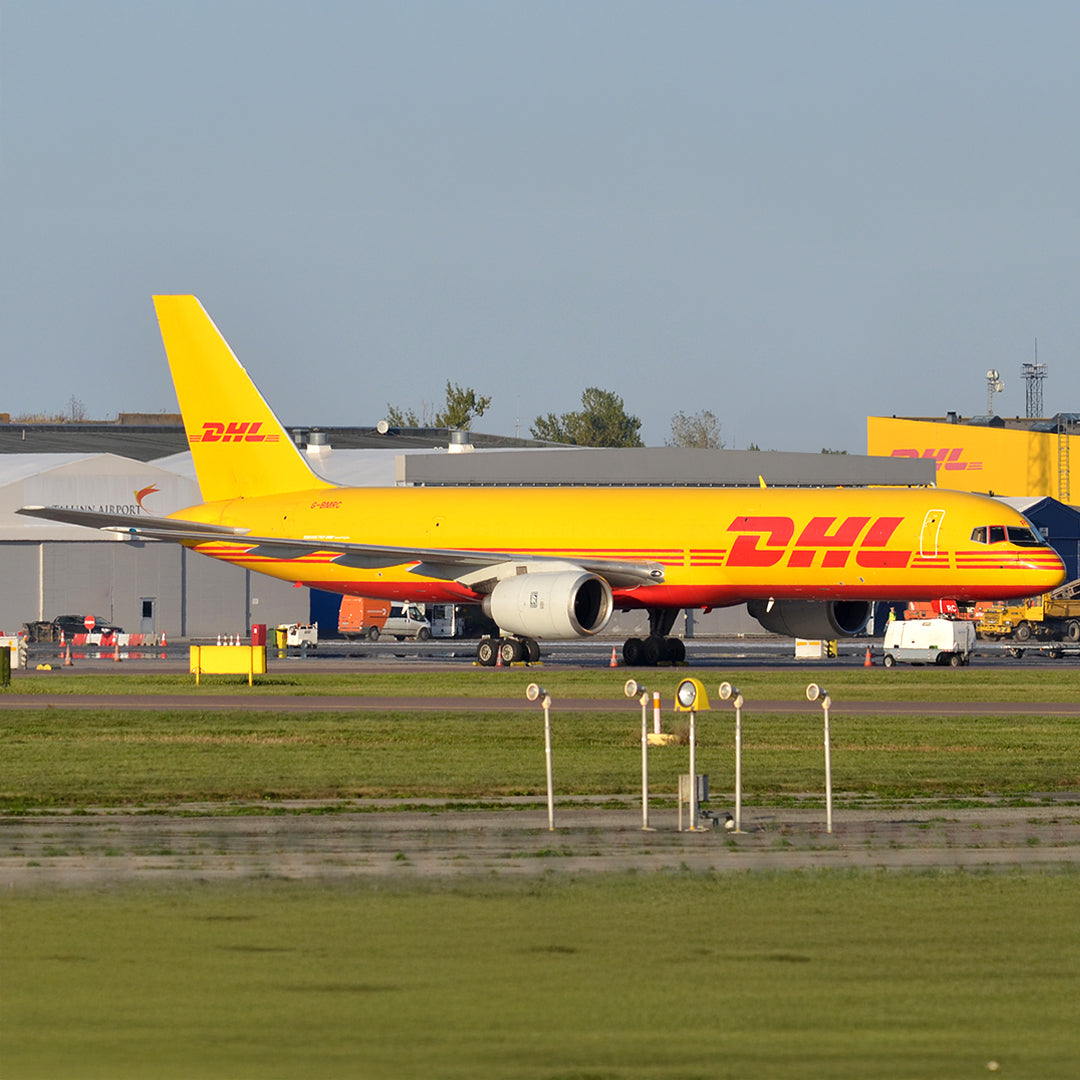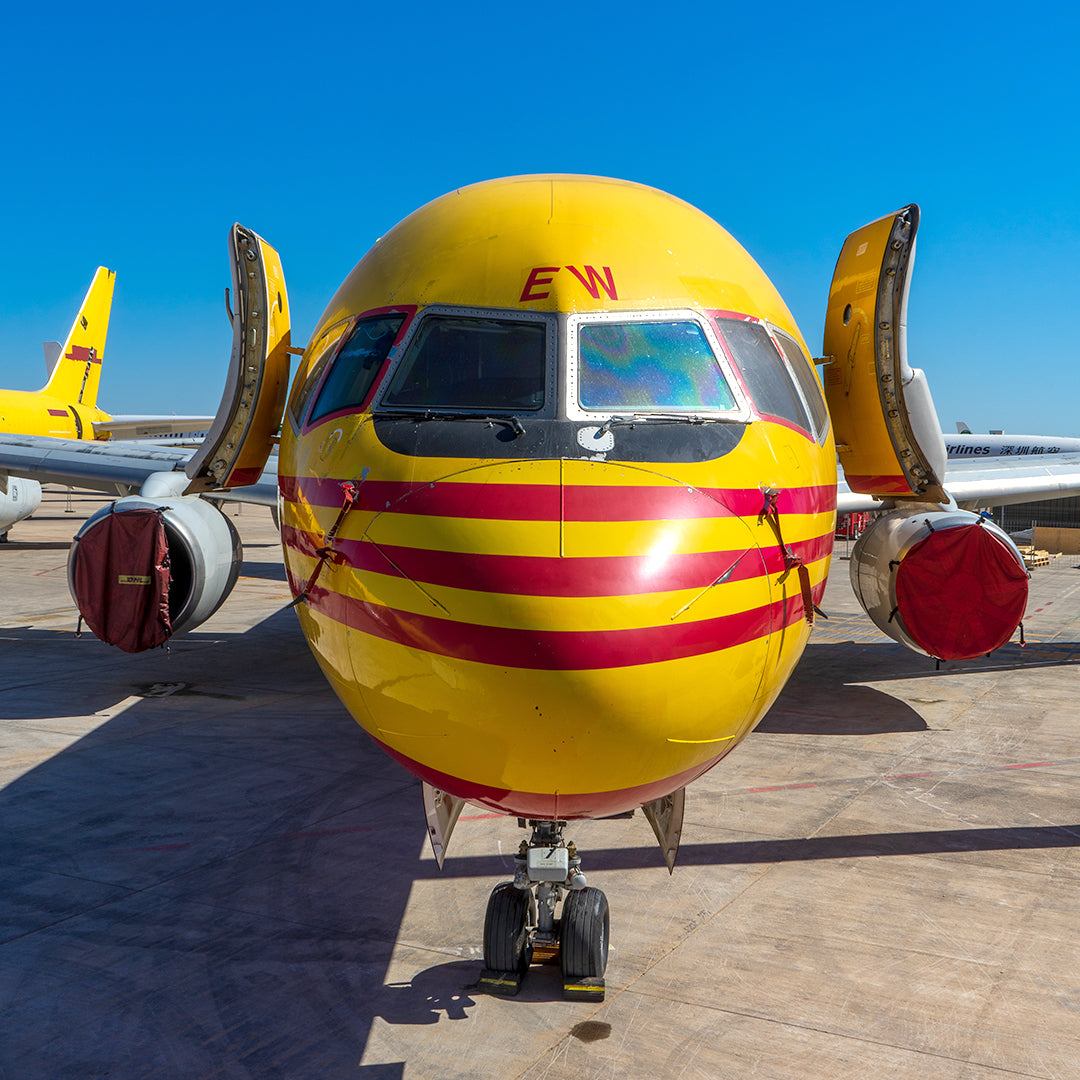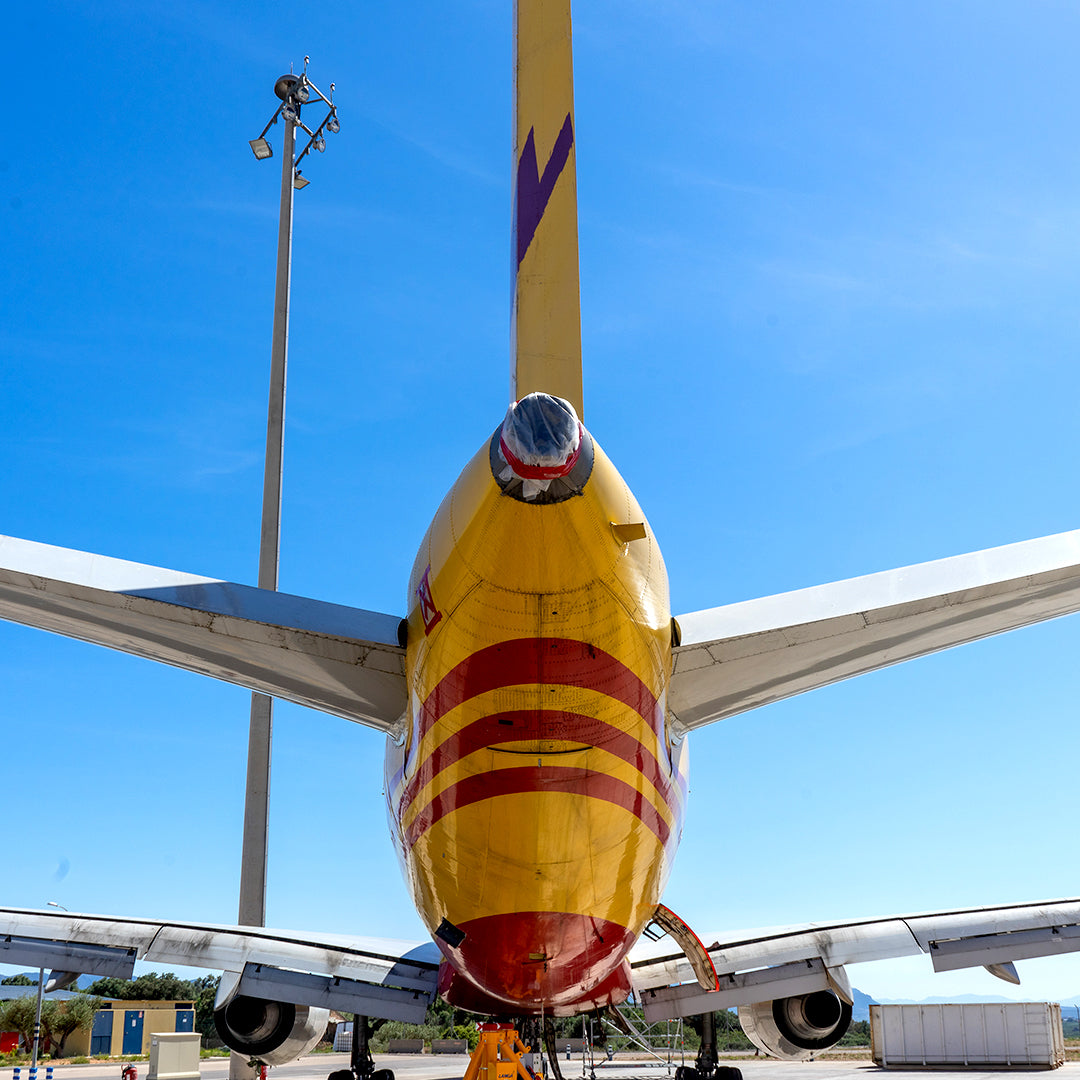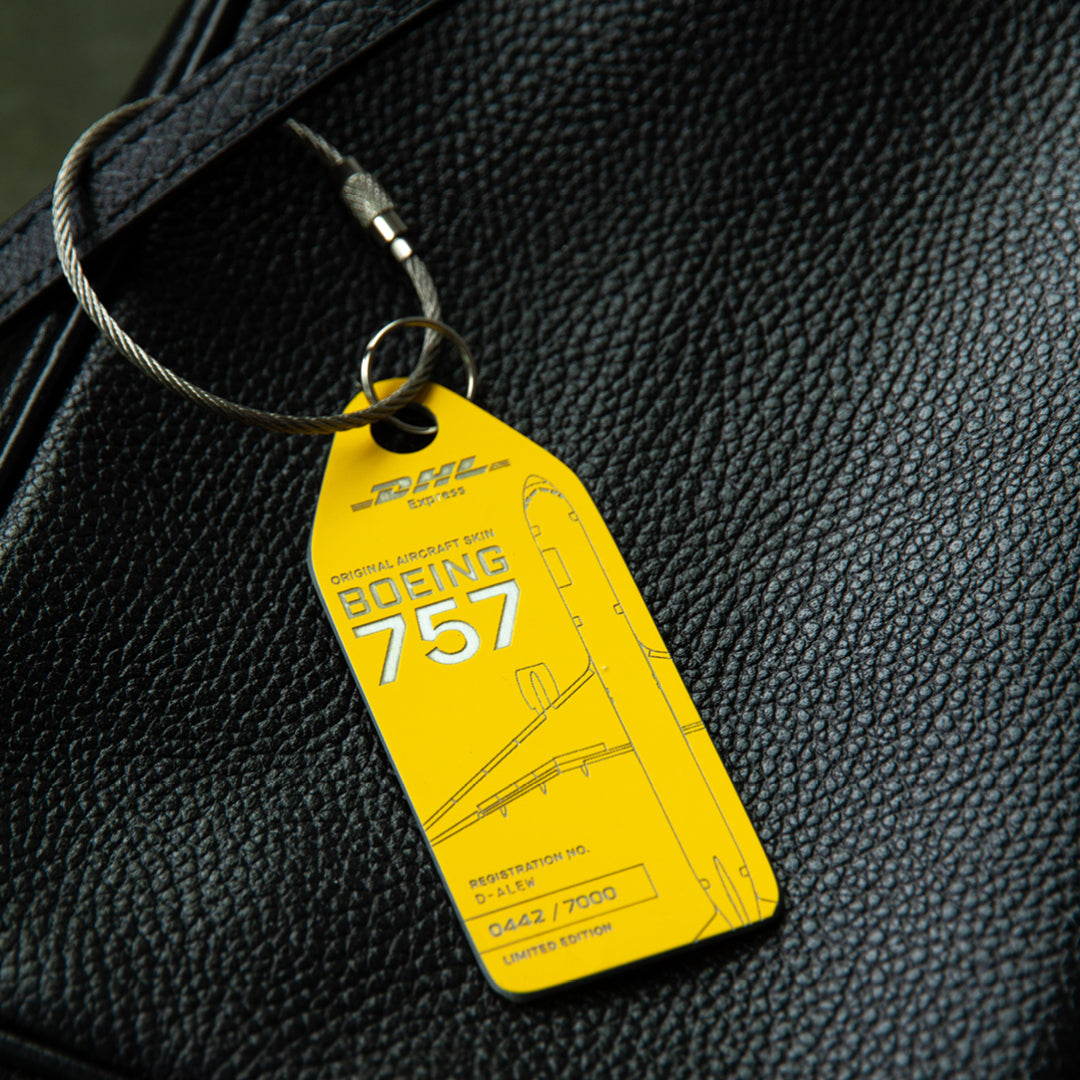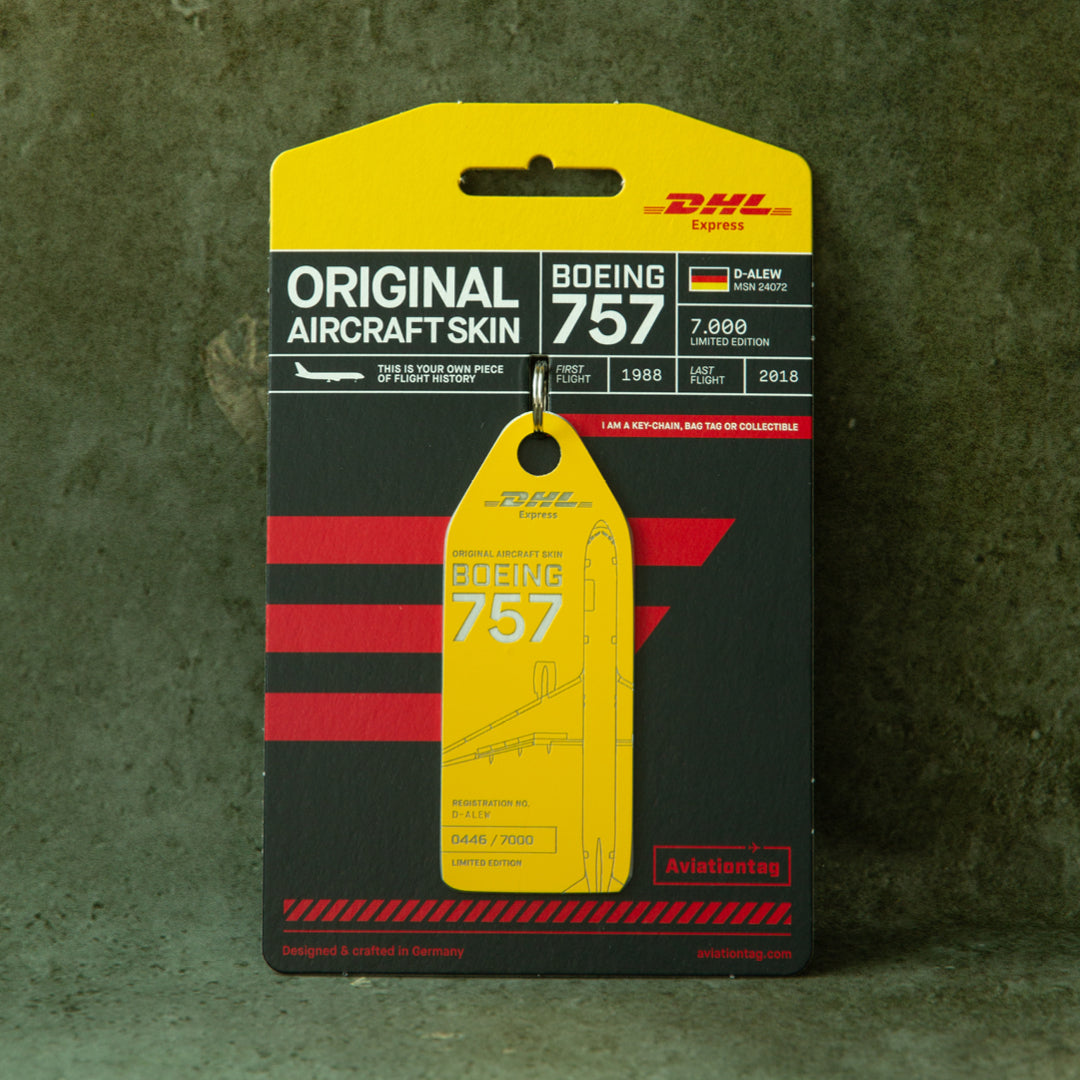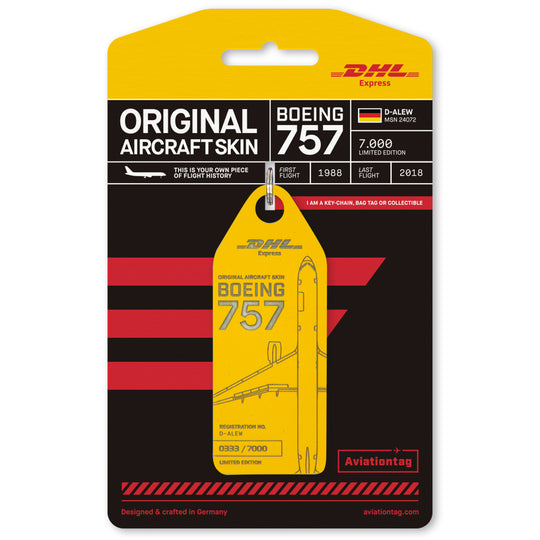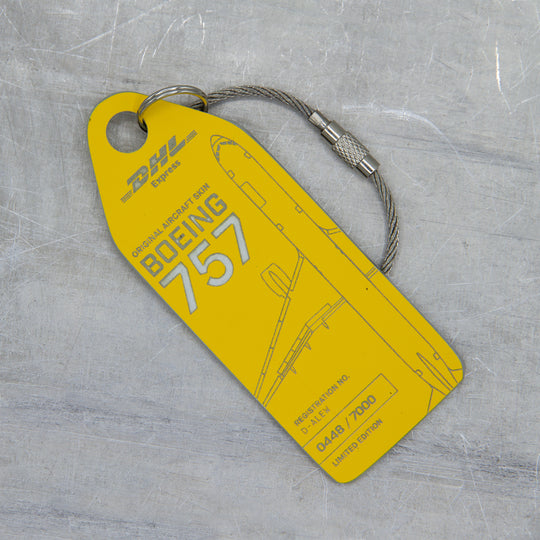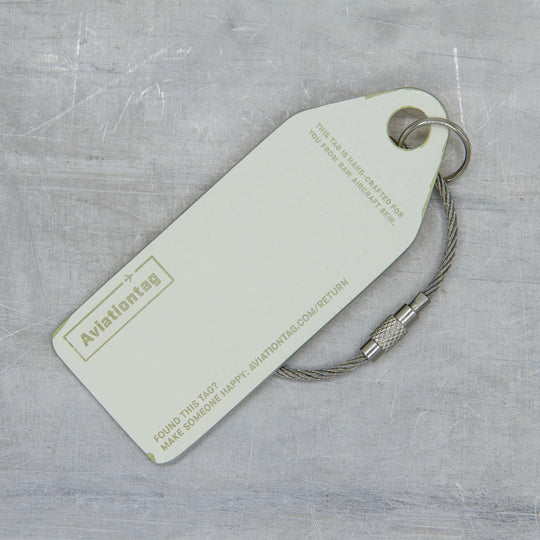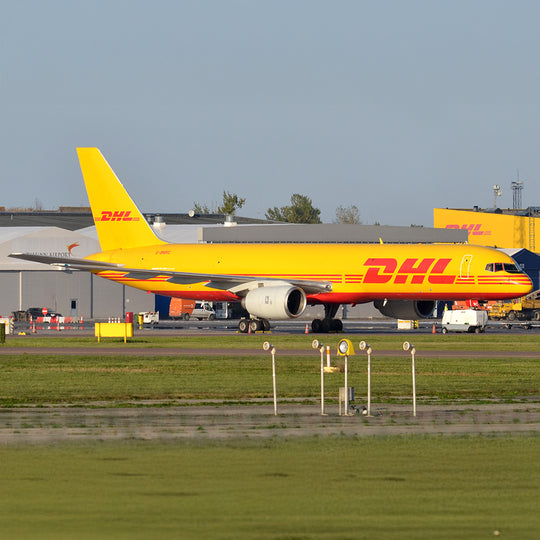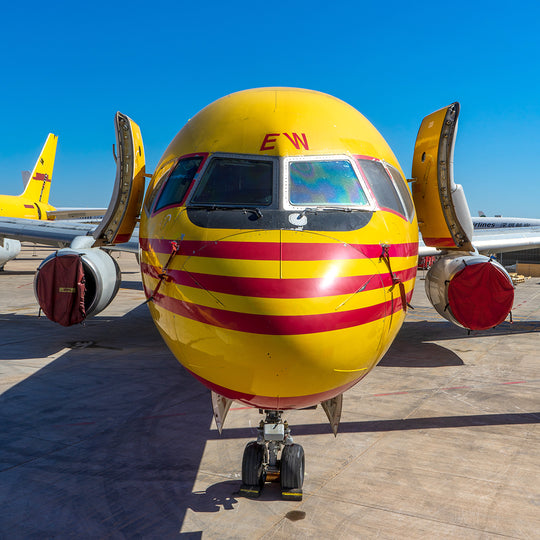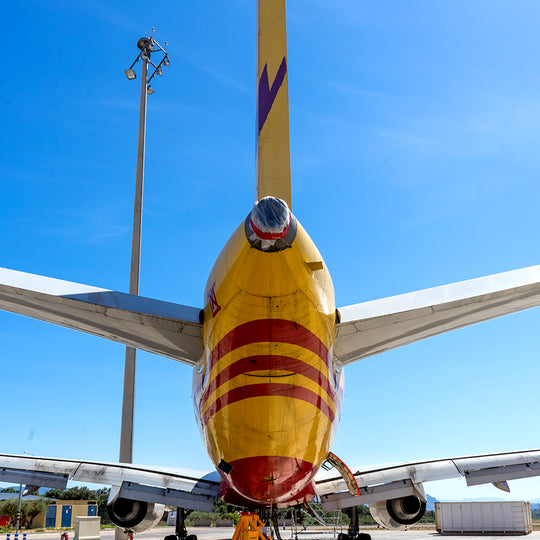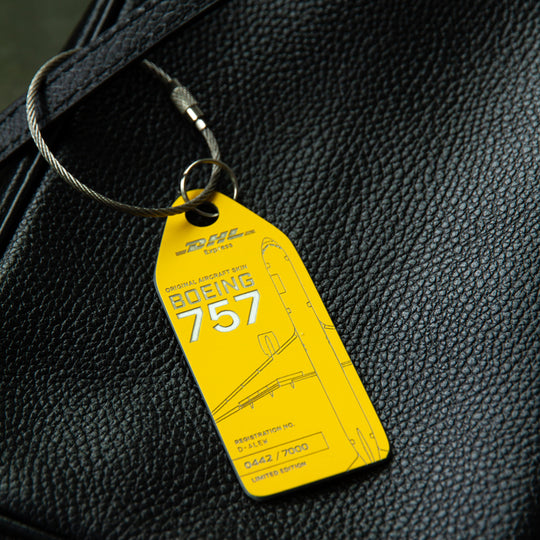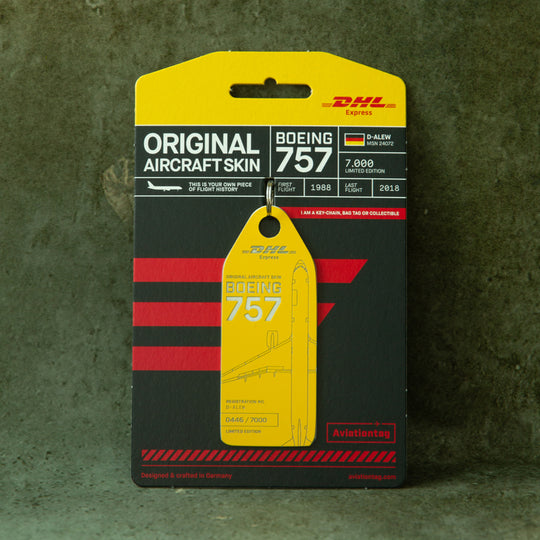Please note: Every Aviationtag is unique. Depending on the plane, tags may vary in terms of haptics, material thickness and colour. Small blemishes bear witness to the plane’s long history and are an authentic reminder of its glory days over the clouds. Small scratches, flaky paint and imperfections are totally normal and give our Aviationtags their unique charm – the charm of a vintage product crafted from upcycled materials These quirks are not the result of the production process, they simply reflect the state of the aircraft material we use when it was extracted.
If you want to use it as a key-chain or bag-tag we strongly suggest to use the Aviationtag protection cover.
Boeing 757:
The Boeing 757 is a narrow-body, twin-engine jet airliner developed by Boeing in the late 1970s as a successor to the 727. Designed for short- to medium-haul routes, the 757 was equipped with more efficient turbofan engines, advanced aerodynamics, and a higher fuel capacity, making it a favorite among airlines for both passenger and cargo operations. It first flew in 1982 and quickly became known for its powerful takeoff performance and ability to operate from shorter runways, making it a preferred choice for transcontinental and high-altitude flights.
Boeing produced two main versions: the 757-200, which became the standard model for most airlines, and the stretched 757-300, introduced in the late 1990s. With a maximum range of over 7,200 kilometers (4,500 miles), the 757 was highly versatile, used by major carriers like American Airlines, Delta, and British Airways. Many were later converted into freighters, extending their operational life.
Although Boeing ceased production in 2004, the 757 remains an iconic aircraft, still widely used today, particularly in cargo fleets and by charter airlines. Its legacy continues, with many aviation enthusiasts recognizing its unique blend of power, efficiency, and reliability.


